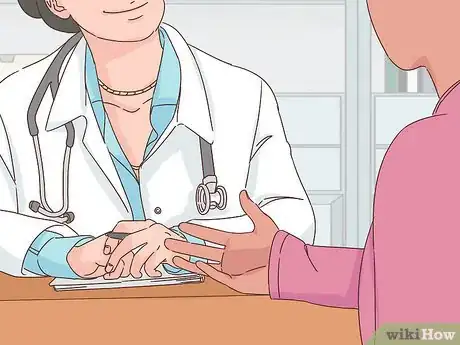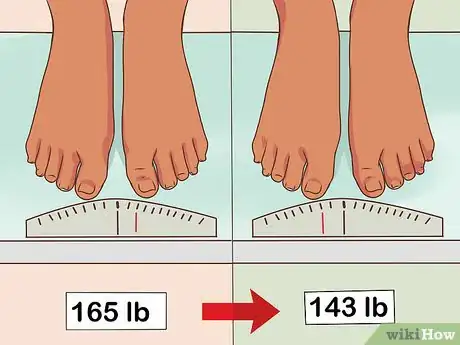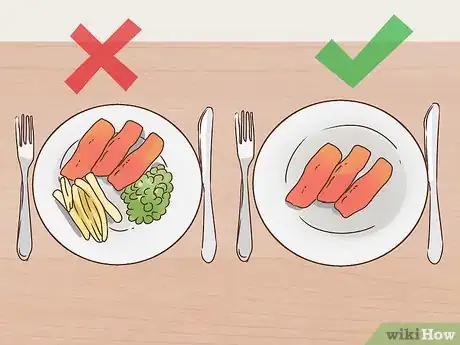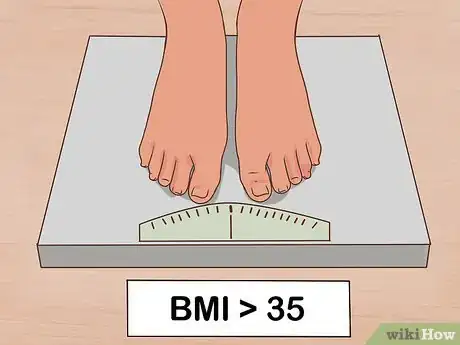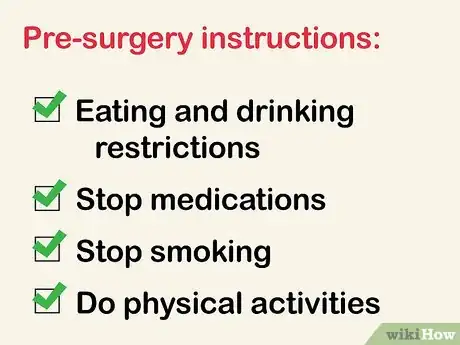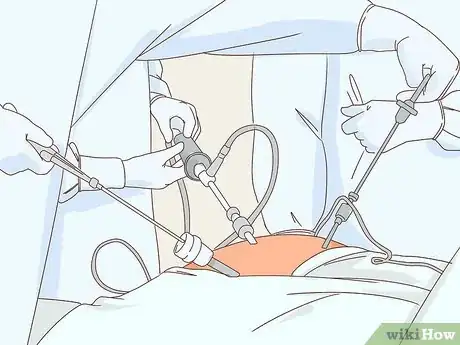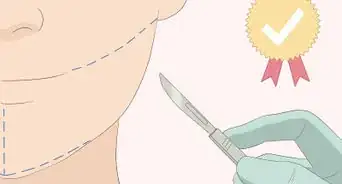This article was medically reviewed by Sarah Gehrke, RN, MS. Sarah Gehrke is a Registered Nurse and Licensed Massage Therapist in Texas. Sarah has over 10 years of experience teaching and practicing phlebotomy and intravenous (IV) therapy using physical, psychological, and emotional support. She received her Massage Therapist License from the Amarillo Massage Therapy Institute in 2008 and a M.S. in Nursing from the University of Phoenix in 2013.
There are 7 references cited in this article, which can be found at the bottom of the page.
This article has been viewed 48,045 times.
Excess fat in the pancreas has been linked to type 2 diabetes and pancreatitis, but you may be able to reverse these conditions by losing weight! We'll show you how you can work with your doctor to come up with an effective plan for losing weight.
Steps
Radically Restricting Your Caloric Intake
-
1Consult your doctor. Substantially reducing your caloric intake can provide the weight loss necessary to reduce the amount of fat in your pancreas. However, such a radical diet should only be attempted under medical supervision. Talk to your doctor about whether or not a very low-calorie diet is a good fit for you.[1]
-
2Set a goal to lose 10–15 kilograms (22–33 lb). In a recent study, 9 out of 10 people who lost 15 kilograms (33 lb) put their type 2 diabetes into remission. Working with your doctor, determine how much weight you need to lose.[2]Advertisement
-
3Eat 825–850 calories per day. Working together with your doctor, develop a diet plan that uses meal-replacement shakes or bars as well as some small balanced meals in order to maintain this low-calorie goal.
- Depending on how much weight you need to lose, you will need to follow this regimen for 3 to 5 months.
- Diets this low in calories should not be followed by children, pregnant women, or breastfeeding mothers.
-
4Stay motivated. A diet this extreme is going to be difficult at times. You will need to work hard to stay motivated and stick to your regimen. Some ideas for staying motivated include:
- Finding a support network (online or in person).
- Giving yourself non-food rewards when you reach small goals (such as a new clothing item).
- Tracking your progress each week.
-
5Reintroduce food gradually over 2-8 weeks. When you reach your goal, it is important not to return to normal eating patterns too quickly. Work with your doctor to formulate a sensible meal plan to gradually reintroduce typical food portions.[3]
- Eating too much food too quickly can cause stomach pain, constipation, and other digestive distress.
-
6Begin including daily activity after you reach your weight goal. This diet is based on reducing calories without increasing physical activity. After you reach your goal, however, it will be important to begin including some movement into your daily routine.[4] You might try:
- Going for walks
- Doing yoga
- Water aerobics
Considering Gastric Bypass Surgery
-
1Talk to your doctor. Gastric bypass surgery limits the amount of food a person can physically tolerate. This surgery can cause rapid weight loss, thereby reducing the amount of fat in the pancreas.[5] Gastric bypass, however, can pose both short-term and long-term risks. Discuss these with your doctor.[6]
- Short-term risks include: excessive bleeding, infection, adverse reactions to anesthesia, blood clots, problems with breathing, leaks in your gastrointestinal system, and in rare cases, death.
- Long-term risks include: bowel obstruction, dumping syndrome (which causes diarrhea, nausea, and vomiting), gallstones, hernias, hypoglycemia (low blood sugar), malnutrition, stomach perforation, stomach ulcers, vomiting, and in rare cases, death.
-
2Find out if you meet the initial qualifications. In order to be considered for a gastric bypass, you must either have a body mass index (BMI) of more than 40, or have a BMI of at least 35 and a weight-related condition (like type 2 diabetes).
- In some cases, a person with a BMI of 34 or lower may be considered if their weight is creating serious problems with their health.
-
3Undergo an extensive health screening. Before your doctor can approve you for this surgery, you will have to undergo a series of in-depth medical tests, and in some cases, have a psychological evaluation. This is done to ensure that you are physically and emotionally strong enough to handle the surgery.[7]
-
4Follow pre-surgery instructions. Depending on your specific health needs, your doctor may ask you to do several things prior to your surgery. Your doctor may ask you to:
- Restrict your eating and drinking
- Stop taking certain medications
- Stop smoking
- Begin a physical activity program
-
5Undergo gastric bypass surgery. When you have gastric bypass surgery, you will be placed under anesthesia. The surgeon will make a small incision in your abdomen and insert laparoscopic tools. The surgeon will then place an inflatable band around the uppermost part of your stomach.[8]
- In most cases, you will spend 1 night in the hospital.
-
6Follow all post-surgery guidelines. Immediately following your surgery, you won't be able to eat for a period of 2 days, in order to let your stomach heal. After this, you will begin eating liquids, then move on to pureed foods, and finally onto solid foods. You will be expected to follow a restricted diet for at least 12 weeks.[9]
- Maintain all scheduled follow-up appointments.
References
- ↑ https://www.ncbi.nlm.nih.gov/pmc/articles/PMC3168743/
- ↑ http://www.thelancet.com/journals/lancet/article/PIIS0140-6736(17)33102-1/fulltext?elsca1=tlpr
- ↑ http://www.thelancet.com/journals/lancet/article/PIIS0140-6736(17)33102-1/fulltext?elsca1=tlpr
- ↑ https://www.ncbi.nlm.nih.gov/pmc/articles/PMC3168743/
- ↑ http://journals.lww.com/annalsofsurgery/Abstract/2010/12000/Remission_of_Type_2_Diabetes_After_Gastric_Bypass.10.aspx?trendmd-shared=0
- ↑ https://www.mayoclinic.org/tests-procedures/bariatric-surgery/basics/definition/prc-20019138
- ↑ https://www.sciencedaily.com/releases/2015/12/151201141231.htm
- ↑ https://my.clevelandclinic.org/departments/bariatric
- ↑ https://www.mayoclinic.org/tests-procedures/bariatric-surgery/basics/what-you-can-expect/prc-20019138
